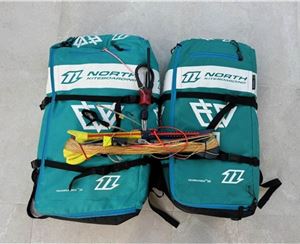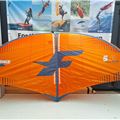A history of weather discovery
 What is "Weather" ?
What is "Weather" ?
These days, most of us have some sort of understanding about the weather. Each night on the telly we get to see fantastic fly-bys of the weather, animated synoptic charts showing the weather approaching and passing us.
Why don't forecasters get it right all the time? Maybe a step back into history can provide some idea of just how far we've come in such a short space of time. It's only in the last 50 years of human existance that weather forecasting has been of any sound accuracy at all.
Before you write off the weather man, consider if you'd been some of these guys.
Back in 530 BC ancient philosphers like Anaximander (610-546 BC) where grapling with the concept of what "stuff" existed in that empty space between your eyeball and your hand. Everyone still thought the world was flat. A clever kid at school, Anaximander suggested "Air is the first principle of things, for from this all things arise and into this all resolved again". Air changed to water, or fire, or back. Kind of made sense when you look at it. If you boil water it does dissappear. Fire seems to go up into . ?
Fast forward 200 years to Empedocles (490-320 BC). We were now starting to talk about more elements .. Earth, Air, Fire & Water. Each of these had properties .. hotness, coldness, dryness & wetness. Getting closer.
 Our good mate Aristotle (384-322 BC, pictured here) threw his hat in the ring. He said there was no such thing as a vacuum. He ran experiments to prove that air had no weight. He filled a bag with air, weighed it, emptied the bag, weighed it - no difference! Proof - see! His method was correct, just his instruments weren't precise enough to detect the difference. Never mind.
Our good mate Aristotle (384-322 BC, pictured here) threw his hat in the ring. He said there was no such thing as a vacuum. He ran experiments to prove that air had no weight. He filled a bag with air, weighed it, emptied the bag, weighed it - no difference! Proof - see! His method was correct, just his instruments weren't precise enough to detect the difference. Never mind.
Philo of Byzantium (260-180 BC) got straight A's in school because he had a better experiment and was able to prove air had substance. He attached a tube to a glass globe, then inserted the open end of the tube into a dish of water. When he heated/cooled the globe, the water level rose/fell (because the air expanded/contracted). With this knowledge he went on to invent handy devices such as the the bellows, an air powered missile launcher, and the piston pump. It's unknown whether he then invested his profits in riverside realestate, or spent his days in rehab.
 We'll rip forward a few years to Evangelista Torricelli (1608-1649) who accidentally invented a device that would change things forever. Evangelista had a tricky problem on hand. Apparently, pumpmakers just didn't seem able to raise water higher than 10 meters using a suction pump. Tozza (as he was know to his friends) thought he'd give mercury a go as it was fourteen times as heavy as water. In 1643 he grabbed a 1 meter length of tube, filled it with mercury, sealed it at the top, and then stood it in a dish of mercury. The column of mercury fell to about 70cm leaving what became know as the "Torricellian vacuum". He had invented the worlds first instrument which measured the pressure of air around us. The first barometer! He became quite famous and even had a unit of pressure, the "torr" named after him. There was widespread speculation that he refused to attend book signings, and engaged in rowdy late night parties.
We'll rip forward a few years to Evangelista Torricelli (1608-1649) who accidentally invented a device that would change things forever. Evangelista had a tricky problem on hand. Apparently, pumpmakers just didn't seem able to raise water higher than 10 meters using a suction pump. Tozza (as he was know to his friends) thought he'd give mercury a go as it was fourteen times as heavy as water. In 1643 he grabbed a 1 meter length of tube, filled it with mercury, sealed it at the top, and then stood it in a dish of mercury. The column of mercury fell to about 70cm leaving what became know as the "Torricellian vacuum". He had invented the worlds first instrument which measured the pressure of air around us. The first barometer! He became quite famous and even had a unit of pressure, the "torr" named after him. There was widespread speculation that he refused to attend book signings, and engaged in rowdy late night parties.
So, heads up for a moment. It's only 400 years ago and philosphers have become "scientists" and the barometer has been invented. We are still unaware that weather "travels" as a system. It's widely believed that weather just "happens" where ever you happen to be, not that it moves across the land. I can still remember when I was in a car and we drove out of rain. There was a wet bit and then a dry bit. It raised my eyebrows as a youngster, because until then, I thought that when it rained, it simply "rained everywhere". Hmmmmm.
Robert Boyle (1627-1691) was so clever he made a law that's used every day now. Amazingly, it was called "Boyles Law". Boyley found out that "For a fixed amount of gas kept at a fixed temperature, Pressure and Volume are inversely proportional" .. or .. squash air and the pressure goes up. Give air more space, and the pressure drops. Despite having a law named after him, he died a sad man who never came to terms that a coin (or even a stamp) with his image was never issued.
 Come 1685, we were lucky enough to have the birth of George Hadley. Despite being a lawyer, he picked away at weather as a sideline, and through his research made a discovery that was given the creative name of a "Hadley Cell". (He was so revered that they even named a crater on Mars after him. Tidy.)
Come 1685, we were lucky enough to have the birth of George Hadley. Despite being a lawyer, he picked away at weather as a sideline, and through his research made a discovery that was given the creative name of a "Hadley Cell". (He was so revered that they even named a crater on Mars after him. Tidy.)
Hadley, was followed by William Ferrel (the "Ferrel Cell"), and Gaspard-Gustave Coriolis (the "Coriolis Effect") who all made major discoveries about the atmosphere which are the basis of much of the forecasting that occurs today.
It wasn't until the invention of the telegraph in 1837 that forecasting could actually begin. Prior to this, the only way to get information about weather in another area was by a steam train. The weather usually arrived before the train.
Our understanding of the elements continued to improve, and once we had our hands on decent computers (from around 1955), mankind finally had the information, technology and communications network to really stuff up forecasts be able to issue forecasts for the enjoyment of all.
There's a famous (longwinded) quote from a Bob Ryan - a meteorologist who was getting bagged out by the media at the time.
 In 1982 he wrote "Imagine a rotating sphere that is 12,800 kilometers in diameter, has a bumpy surface, is surrounded by a 40-kilometer-deep mixture of different gases whose concentrations vary both spatially and over time, and is heated, along with its surrounding gases, by a nuclear reactor 150 million kilometers away. Imagine also that this sphere is revolving around the nuclear reactor and that some locations are heated more during one part of the revolution and other locations are heated during another part of the revolution. And imagine that this mixture of gases continually receives inputs from the surface below, generally calmly but sometimes through violent and highly localized injections. Then, imagine that after watching the gaseous mixture, you are expected to predict its state at one location on the sphere one, two, or more days into the future. This is essentially the task encountered day by day by a weather forecaster."
In 1982 he wrote "Imagine a rotating sphere that is 12,800 kilometers in diameter, has a bumpy surface, is surrounded by a 40-kilometer-deep mixture of different gases whose concentrations vary both spatially and over time, and is heated, along with its surrounding gases, by a nuclear reactor 150 million kilometers away. Imagine also that this sphere is revolving around the nuclear reactor and that some locations are heated more during one part of the revolution and other locations are heated during another part of the revolution. And imagine that this mixture of gases continually receives inputs from the surface below, generally calmly but sometimes through violent and highly localized injections. Then, imagine that after watching the gaseous mixture, you are expected to predict its state at one location on the sphere one, two, or more days into the future. This is essentially the task encountered day by day by a weather forecaster."
Or, as we like to say, "The forecast was right, it's the weather that got it wrong!"














